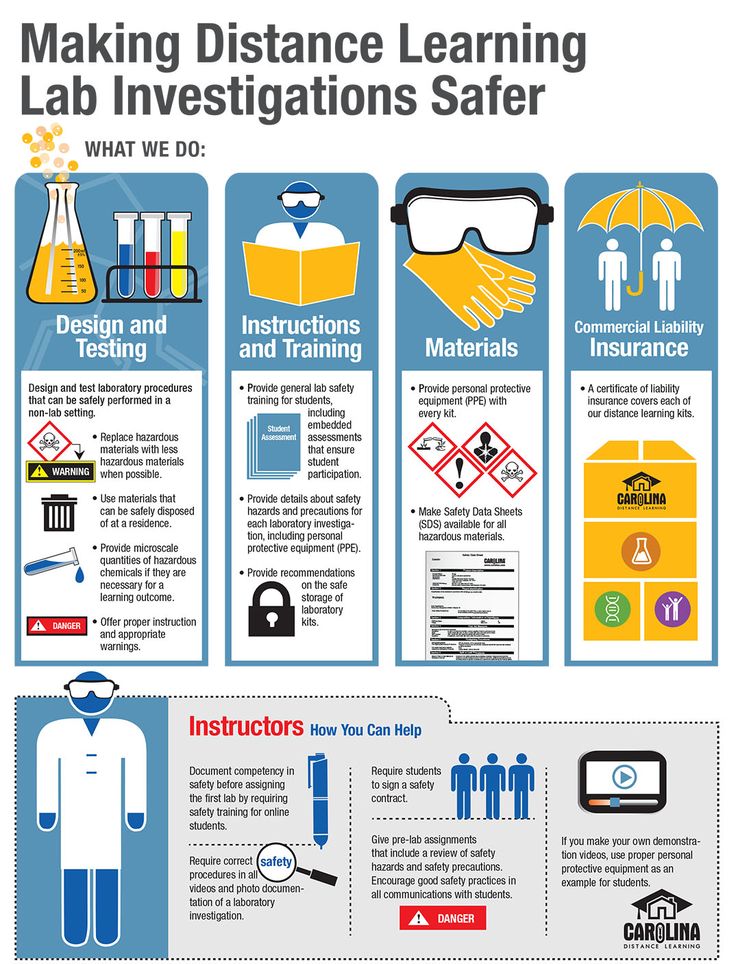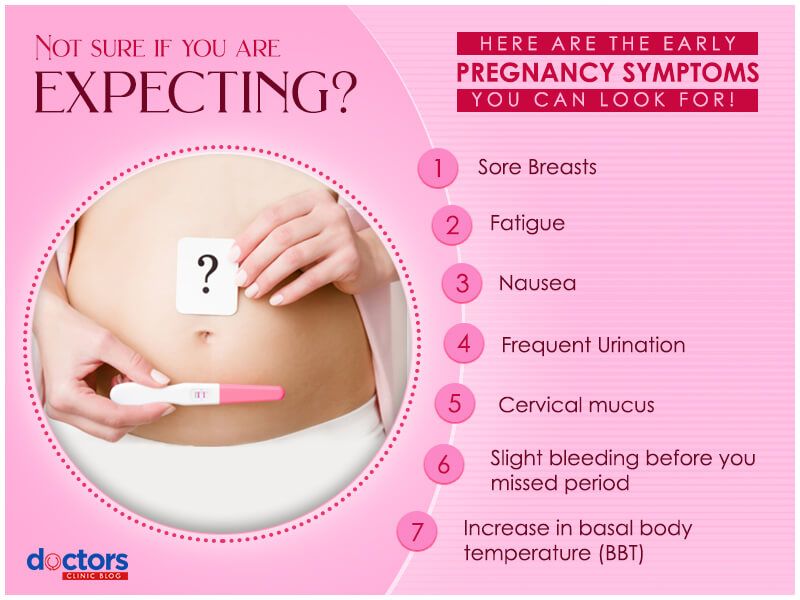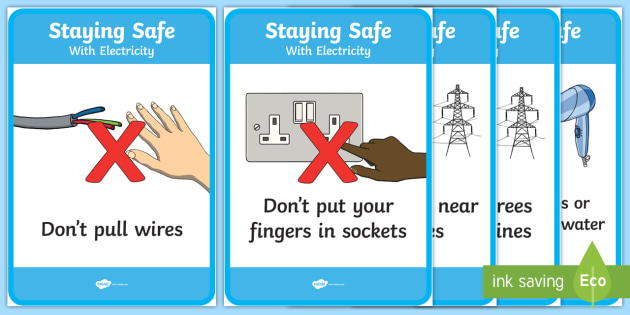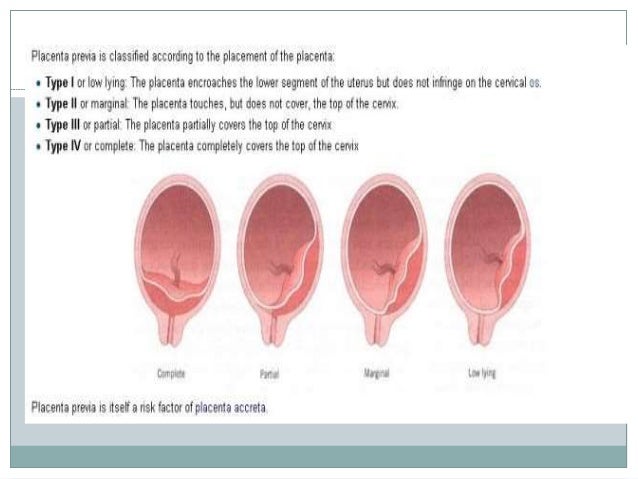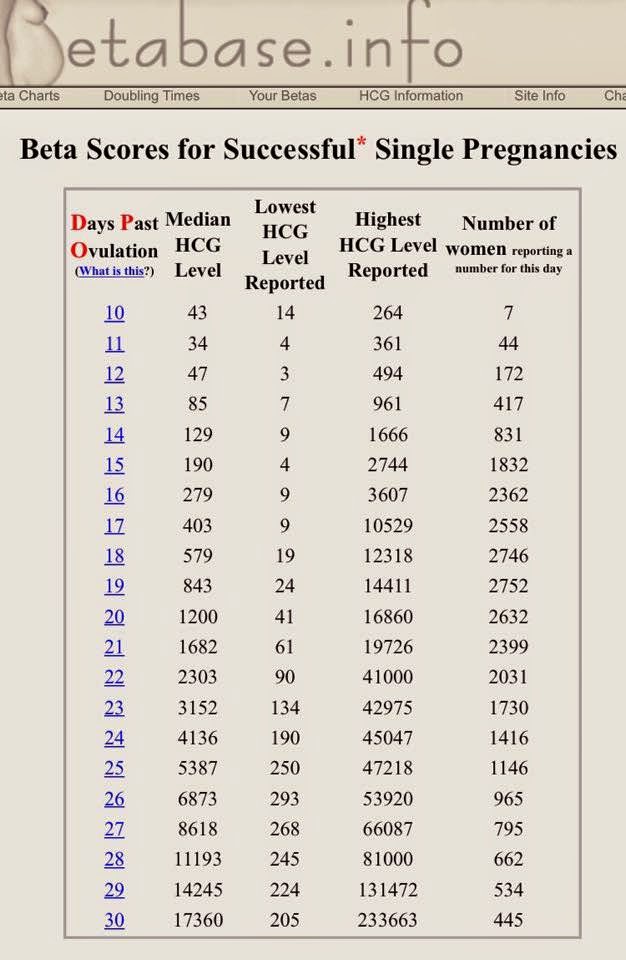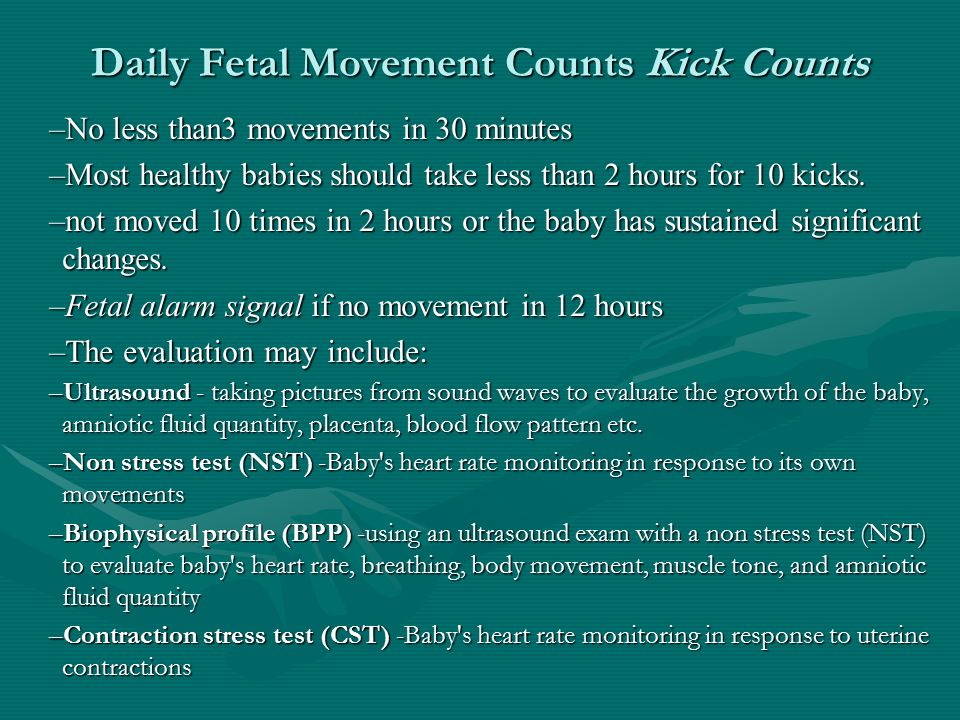First feed after birth
Breastfeeding your newborn | What to expect the first week
The first week with your baby is exciting but can also be daunting – particularly if you’ve never breastfed before. Read our breastfeeding advice to help you get off to the best possible start.
Share this content
How do I know when to feed my baby?
After giving birth life can seem pretty bewildering – you’re getting to know your newborn while recovering from the delivery. Your emotions might be all over the place (especially between days two and five when many women get the double whammy of their milk ‘coming in’1 and the ‘baby blues’.2 Plus, there’s often expectation – and pressure – to be up and about quickly and generally be a supermum. But one of the most super things you can do this week is just be with your baby and get breastfeeding on track.
When should I start breastfeeding my newborn?
It’s best to try to breastfeed your baby in the first hour after birth. By latching on and sucking rhythmically, he begins switching on the cells in your breasts to initiate your milk supply.1 It isn’t known as the ‘magic hour’ for nothing!
“Ideally, your baby will be put on your chest as soon as he’s born to give him access to the breast. He might feed, he might not; but give him the opportunity to do so,” says Cathy Garbin, an internationally renowned lactation consultant.
“Support his body and let him attempt to find his way to your breast and self-attach (you can watch videos of this process, called the ‘breast crawl’, online). However, if your baby doesn’t attach, healthcare professionals are usually very skilled at helping mums with positioning. Baby-led attachment, with mum in a semi-reclined breastfeeding position, is a good way to start.”
So forget about weighing and dressing your baby in that special first hour, or at least until after the first breastfeed. Enjoy relaxed cuddles and plenty of naked skin-to-skin contact with him. This will get oxytocin – ‘the love hormone’ – flowing in both of you, which is essential for the release of your first milk, colostrum.3
This will get oxytocin – ‘the love hormone’ – flowing in both of you, which is essential for the release of your first milk, colostrum.3
“As soon as they were sure our son was healthy, the midwives gave us time as a family – just me, my husband and our new baby – to get to know each other. It was messy, emotional and utterly blissful, and he fed twice in that special hour together,” remembers Ellie, mum of two, UK.
And did you know that as he breastfeeds, your baby is helping you recover from the birth? This is because oxytocin also makes your uterus contract. In the first hours after the birth this helps to expel your placenta naturally and reduces blood loss.4
What if the birth doesn’t go to plan?
If you have a c-section or there are other complications, you may still be able to have skin-to-skin time with your baby and breastfeed in the first few hours.
“If you aren’t able to hold your baby, the next best thing is for him to have skin-to-skin contact with your partner instead. This will help keep your baby feeling safe, loved and warm until you’re ready,” says Cathy.
This will help keep your baby feeling safe, loved and warm until you’re ready,” says Cathy.
If your baby is unable to breastfeed, then it’s a good idea to start expressing your milk early and frequently until he is able. “While breastfeeding directly as soon as possible gives mum and baby a good start, it’s not essential,” reassures Cathy. “What’s more important is to initiate your milk supply so you can work towards breastfeeding later if needed.”
You can hand express and use the hospital breast pump to help initiate your milk supply in the beginning.5 The precious colostrum you collect can then be given to your baby. This is especially important if he is premature or poorly, because your breast milk has so many wonderful health benefits.
Don’t feel like breastfeeding is unachievable if your baby arrives early or has medical complications that stop him feeding at the start, either. “I’ve worked with many, many mums where their baby hasn’t breastfed directly from the breast at all in the first six weeks due to a premature arrival or other difficulties, and they’ve gone on to breastfeed successfully,” says Cathy.
Is my baby latching on correctly?
Good attachment is crucial for getting breastfeeding off to a good start,6 as your baby’s latch affects how well he drinks the milk and consequently how he grows and develops. A poor latch can cause sore or damaged nipples, so never worry about asking a healthcare professional to check your attachment, even if you’ve been told the latch is fine and you don’t notice an obvious problem – especially while you’re still at your birth facility.
“Every time I fed in hospital, I buzzed a midwife to check the latch,” says Emma, mum of two, Australia. “There were a few times I thought I had it right but it was painful and the midwife helped take my baby off and do it properly. It meant I had the confidence to do that at home.”
When your baby is latching on, aim your nipple towards the roof of his mouth. This way he will latch on to the nipple, as well as some of the areola beneath it. This means he can draw both the nipple and some breast tissue into his mouth and feed well. 6
6
“The latch should feel pretty comfortable and like a tugging sensation rather than a pain,” says Cathy. “Your baby will have his mouth wide open. His bottom lip may be flanged outwards, but his top lip will rest comfortably on your breast. His body language will show he is comfortable. There’s not going to be a large volume of milk at this early stage, so you won’t see much swallowing, although your baby will be sucking a lot and feeding lots of times.”
How often should a newborn feed?
Breastfeeding frequency and duration can vary a lot in the first week. “The first 24 hours differ considerably from baby to baby. Some babies have a long sleep – birth is tiring! – and some feed frequently,” says Cathy. “This variability is one of the most confusing things for new mums. Everyone gives you different advice, so it’s important to remember each mother and baby are individuals.
“Colostrum is thicker than mature breast milk and produced in smaller amounts, but it’s packed with goodness. Drinking your colostrum gives your baby practice at sucking, swallowing and breathing before your milk comes in in greater quantities,” Cathy explains.
Drinking your colostrum gives your baby practice at sucking, swallowing and breathing before your milk comes in in greater quantities,” Cathy explains.
By the time your milk comes in, around days two to four, your baby will probably be nursing eight to 12 times every 24 hours (sometimes more!), including during the night.7 These early feeds can take anywhere from 10 to 15 minutes to 45 minutes to an hour, as your baby is still developing the muscles and coordination he needs to suck efficiently.
“It’s very intense at first – often more intense than you imagined it would be – and that’s what shocks most new mums,” says Cathy. “They can hardly have time to get to the loo, have a shower, get a bite to eat. It’s common to find that a surprise.”
This is something Camilla, mum of one, Australia, experienced: “That first week Frankie fed every two hours, day and night, for between half an hour to an hour at a time,” she says. “My partner and I were both permanently exhausted!”
Do I need a newborn feeding schedule?
The good news is that this frequent feeding helps initiate and build your milk supply.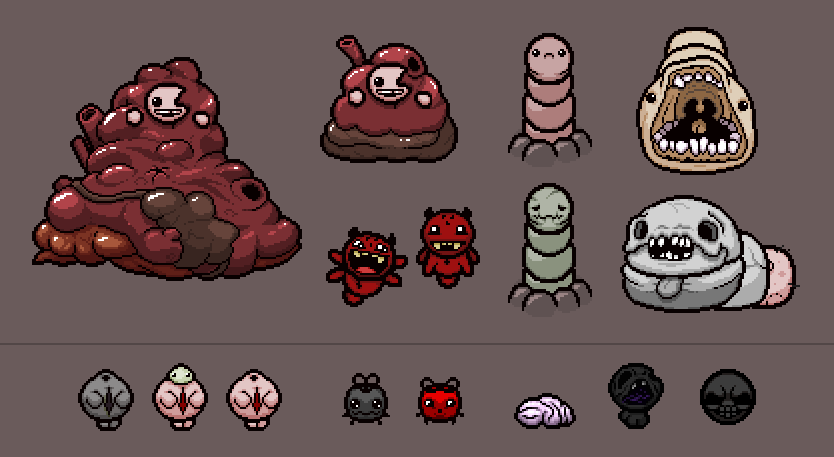 7 So the more your baby feeds, the more milk you’ll make. Therefore you shouldn’t worry about planning a newborn feeding schedule as this may reduce his opportunities to feed. Just concentrate on breastfeeding when your baby gives you hunger cues,8 such as:
7 So the more your baby feeds, the more milk you’ll make. Therefore you shouldn’t worry about planning a newborn feeding schedule as this may reduce his opportunities to feed. Just concentrate on breastfeeding when your baby gives you hunger cues,8 such as:
- stirring from his sleep
- opening his eyes
- turning his head when he feels something on his cheek
- poking his tongue out
- making cooing noises
- sucking his lips
- trying to eat his hand
- getting grizzly
- starting to whine
- crying
Crying is a late sign of hunger, so if in doubt offer your baby your breast. It can be harder to breastfeed your baby once he has started crying, especially at this early stage when you’re both still learning. As he gets older, he’s likely to feed faster and less often, so breastfeeding should start to feel more manageable.
Will breastfeeding hurt?
You might have been told breastfeeding shouldn’t hurt but, in reality, many mums find the first few days uncomfortable. It’s not surprising when you consider your nipples aren’t used to all that strong, frequent sucking your baby is doing.
It’s not surprising when you consider your nipples aren’t used to all that strong, frequent sucking your baby is doing.
“The first couple of days can be uncomfortable as your body and baby get used to breastfeeding. If your baby stays on the breast too long and isn’t attached well, the effect is like wearing a pair of stiff, new shoes,” says Cathy. “Just as you can damage your feet, you can damage your nipples. Preventing damage is better than having to treat it, so see a lactation consultant or breastfeeding specialist if pain continues after the first few days.”
Mariah, mum of one, Canada, agrees: “Though my son’s latch appeared good, he was doing damage while feeding and everything hurt. It turned out a tongue-tie was the culprit, and we received amazing support from our city breastfeeding clinic to diagnose and rectify this.”
You may also feel period-like cramps (known as afterpains) following feeding sessions in the first few days, especially if this isn’t your first baby. This is because the oxytocin released by breastfeeding will help your womb contract further, as it starts to return to its usual size.4
This is because the oxytocin released by breastfeeding will help your womb contract further, as it starts to return to its usual size.4
When your milk comes in, it’s usual for breasts to feel full, firm, and certainly bigger than they used to be. Some women find their breasts get very swollen, hard and tender – a condition called engorgement.10 Feeding your baby frequently should help relieve the pressure. Read What is breast engorgement? for more self-care tips.
How often will my newborn poo and wee?
What goes in must come out! Colostrum acts like a laxative that encourages your baby do his first poo, called meconium. This can be a bit startling as it’s black and sticky like tar.11 But don’t worry, his nappies won’t always be like this – in fact, breastfed babies’ poo usually has an inoffensive, slightly sweet smell.
Here’s how many dirty nappies you can expect and when, and what their contents should look like:
Day one
- Number: one or more
- Colour: greenish black
- Texture: sticky and tar-like
Day two
- Number: two or more
- Colour: dark greenish brown
- Texture: becoming less sticky
Day three
- Number: two or more
- Colour: greenish brown to brownish yellow
- Texture: no longer sticky
Day four to one month
- Number: two or more
- Colour: yellow (they must be yellow by the end of day four at the latest)
- Texture: seedy (like English or American mustard with a little wholegrain mixed in).
 Loose and watery.
Loose and watery.
When it comes to your baby’s wee, it should be pale yellow. An average newborn has one wee for each day of his life… until about day three, when he should have about three wet nappies daily, and from day five, five or more wet nappies daily. You should also notice these nappies getting heavier over the first few days.11
Is my baby getting enough breast milk?
Because you only produce small amounts of milk at first, you might worry it won’t satisfy your newborn. But if you’re feeding on demand, you should be producing what your baby needs. If you want to keep track, check the number of dirty and wet nappies he’s producing, as shown above. If he isn’t following this pattern, seek medical advice.
“In the first three or four weeks, most babies just feed and sleep. If your baby isn’t settled and wants to feed all the time, think about seeing a healthcare professional,” says Cathy.
Your baby might bring up milk-coloured vomit after a feed, and this isn’t a cause for concern. However, if his vomit has orange, red, green, brown or black in it, or he is projectile vomiting, see a healthcare professional. The same applies if your baby has a high temperature, blood in his poo, a sunken fontanelle (the soft spot on his head), or is not back to his birth weight by two weeks of age.11
However, if his vomit has orange, red, green, brown or black in it, or he is projectile vomiting, see a healthcare professional. The same applies if your baby has a high temperature, blood in his poo, a sunken fontanelle (the soft spot on his head), or is not back to his birth weight by two weeks of age.11
But if he doesn’t have any of these signs and is meeting his growth targets, he’s getting enough milk. You’ll both soon get used to breastfeeding and settle down into a more regular pattern.
Read about the next step of your breastfeeding journey in Breastfeeding the first month: What to expect.
References
1 Pang WW, Hartmann PE. Initiation of human lactation: secretory differentiation and secretory activation. J Mammary Gland Biol Neoplasia. 2007;12(4):211-221.
2 Shashi R et al. Postpartum psychiatric disorders: Early diagnosis and management. Indian J Psychiatry. 2015; 57(Suppl 2):S216–S221.
3 Moberg KU, Prime DK. Oxytocin effects in mothers and infants during breastfeeding. Infant. 2013;9(6):201-206.
Infant. 2013;9(6):201-206.
4 Sobhy SI, Mohame NA. The effect of early initiation of breast feeding on the amount of vaginal blood loss during the fourth stage of labor. J Egypt Public Health Assoc. 2004;79(1-2):1-12.
5 Meier PP et al. Which breast pump for which mother: an evidence-based approach to individualizing breast pump technology. J Perinatol. 2016;36(7):493.
6 Cadwell K. Latching‐On and Suckling of the Healthy Term Neonate: Breastfeeding Assessment. J Midwifery & Women’s Health. 2007;52(6):638-642.
7 Kent JC et al. Principles for maintaining or increasing breast milk production. J Obstet, Gynecol, & Neonatal Nurs. 2012;41(1):114-121.
8 Australian Breastfeeding Association [Internet]. Feeding cues; 2017 Sep [cited 2018 Feb].
9 Jacobs A et al. S3-guidelines for the treatment of inflammatory breast disease during the lactation period. Geburtshilfe Frauenheilkd. 2013;73(12):1202-1208.
10 Lawrence RA, Lawrence RM. Breastfeeding: A guide for the medical profession; 2011. 1114 p.
1114 p.
Baby's first 24 hours | Pregnancy Birth and Baby
Baby's first 24 hours | Pregnancy Birth and Baby beginning of content5-minute read
Listen
The first day of your new baby’s life is thrilling and exhausting for both of you. This page explains what your newborn baby can sense, and how the umbilical cord and placenta can be managed. It has general information for you if you have had a healthy, full-term pregnancy – 37 to 42 weeks’ gestation.
What will my newborn baby look like?
When your baby is born, their skin might be blue and mottled. They are likely to be covered in amniotic fluid, blood and vernix, which is a cheesy white substance. This is normal.
Their skin will start to become pink as they start to breathe — which is about a minute after birth. Your baby’s hands and feet may still appear blueish for several hours.
Your baby’s hands and feet may still appear blueish for several hours.
The amniotic fluid and the vernix are there because they were there in the womb. They are important for your baby to be able to smell and taste after birth. These familiar things help your baby to feel secure outside the womb.
Birth of the placenta and cutting the umbilical cord
After you have given birth to your baby, you will have more contractions that will help you deliver the placenta. Once this happens, the umbilical cord, which is connected to the placenta, will be clamped in two places and cut. Your support person might be invited to cut the cord.
Skin-to-skin contact
After a normal vaginal birth, your newborn baby will be put on your chest for skin-to-skin contact. Your baby needs sleep and food, and they need to feel secure and warm, so they need to feel your skin.
Doing this simple thing:
- reduces newborn crying
- helps start and sustain breastfeeding
- helps maintain your baby’s body temperature
After this first contact, they will be weighed, measured and observed to make sure they are healthy.
If you have a caesarean section, ask your midwife to make sure your baby has skin-to-skin contact with you as early as possible. It may be possible for you or your partner to hold your baby-skin-to skin in theatre and in recovery.
Feeding
Babies start to show signs of wanting to feed soon after birth and usually attach and suck at the breast about 50 minutes after birth. They may then breastfeed for an hour or more. Put your baby against your chest, and they will probably find your breast and start feeding. If that doesn’t happen, you can ask your midwife or a lactation consultant for help.
The first milk you make is called 'colostrum'. It’s thick and often yellowish, rather than pure white. It’s the ideal milk for your baby. Normally a small amount is produced — your baby’s tummy is just the size of a marble.
If they haven’t fed an hour or so after birth, try again a couple of hours later. You can also express some colostrum to feed to your baby on a spoon.
Weighing and measuring
After skin-to-skin contact and the first breastfeed, your midwife might offer to weigh your baby, and measure your baby’s length and head circumference. Your baby doesn’t need to be washed for at least 24 hours.
Vitamin K
At the time of weighing, your midwife will also offer to give your baby a vitamin K injection to prevent bleeding from vitamin K deficiency.
Cord blood collection if you are Rh negative
If your blood group is Rh negative, some blood will be taken from the umbilical cord to determine whether your baby’s blood group is compatible.
Sleeping
Your baby will stay with you so you can bond and respond easily to their needs. They’ll probably sleep soon after their first feed, and that might last 6 hours or so. They will probably sleep for more than half of their first day in the world.
Apgar scores
One of the main observations made after birth is called an Apgar score. It assesses your baby’s adjustment to life outside the womb. The Apgar score is measured at 1 minute and 5 minutes after birth while the baby is on your chest. Sometimes it is measured again at 10 minutes after birth.
The Apgar score is measured at 1 minute and 5 minutes after birth while the baby is on your chest. Sometimes it is measured again at 10 minutes after birth.
It records your baby’s heart rate, breathing, colour, muscle tone and reflexes. The maximum score is 10. A score of 7 or above usually means your baby is doing well. It is not an ability or intelligence test, and it doesn’t predict your baby’s health later in life.
What will my newborn baby see, hear, smell, taste and feel?
Your baby has been listening to your voice for the last half of your pregnancy and will recognise it when you speak to them after birth. Your partner or support person’s voice may also be familiar if they have also been talking near your baby. Your baby will feel secure when they hear your voices and may respond by turning their head towards you. Your baby will also be able to hear your heart beating as they did in the womb.
Your baby’s vision is blurred at birth but they will be able to focus on your face from about 30 centimetres away. This is called the ‘cuddle distance’. It is roughly the distance from your breast to your face. Your baby will make the connection between what they hear and what they see.
This is called the ‘cuddle distance’. It is roughly the distance from your breast to your face. Your baby will make the connection between what they hear and what they see.
Your baby will smell and taste the amniotic fluid and your colostrum, which has a similar flavour.
Urine and meconium
Within the first 24 hours your baby will probably pass urine and meconium (newborn faeces) at least once. Meconium is black and sticky. Your baby’s poo will change colour and consistency over the next few days.
More information
You can call Pregnancy, Birth and Baby, 7 days a week on 1800 882 436 to speak with a maternal child health nurse to find out more.
Sources:
Cochrane (Early skin-to-skin contact for mothers and their healthy newborn infants), National Institute for Health and Care Excellence (NICE) (NICE Guideline CG37: Postnatal care up to 8 weeks after birth), World Health Organization (WHO) (Recommendations on newborn health), Raising Children Network (After baby is born: what to expect in the first few hours), Australian Breastfeeding Association (Breastfeeding timeline)Learn more here about the development and quality assurance of healthdirect content.
Last reviewed: September 2022
Back To Top
Related pages
- Mum's first few days after giving birth
- Mum's first 24 hours after birth
- Your baby in the first few days
- Birth injury (to the baby)
- What is kangaroo care?
Need more information?
Newborns behaviour | Raising Children Network
Newborn behaviour baffling you? Here's all you need on newborns behaviour with articles, videos and resources on crying, colic and more.
Read more on raisingchildren.net.au website
Newborn clothes & dressing a newborn | Raising Children Network
How many clothes does a newborn need? And what newborn clothes are best? Get answers to these questions and more in our guide to dressing a newborn.
Read more on raisingchildren.net.au website
Newborn bloodspot screening - MyDr.com.au
Newborn screening tests can detect rare but serious genetic or metabolic disorders in newborn babies.
Read more on myDr website
Wind, burping & newborn babies in pictures | Raising Children Network
Newborns might have wind from swallowing air when crying or feeding. Burping can help newborns get rid of wind. See how to burp your newborn – in pictures
Read more on raisingchildren.net.au website
Newborns development | Raising Children Network
Want to track newborns development? Here's all you need on newborn development with articles, videos and resources on growth, relationships and more.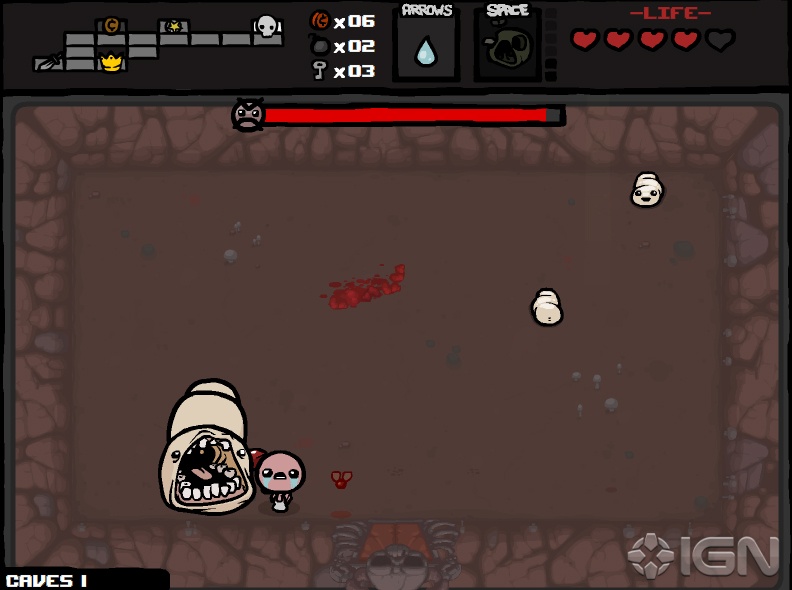
Read more on raisingchildren.net.au website
Dressing a newborn
When dressing your newborn, here are a few things to consider, like which clothes to use, how to dress them and making sure the change table is safe.
Read more on Pregnancy, Birth & Baby website
Is my newborn safe? - MyDr.com.au
Dr Norman Swan explains the risks of COVID-19 to your newborn.
Read more on myDr website
Newborn essentials
Here is a newborn's essentials checklist including vaccinations and immunisations, health checks, nappy changing and breastfeeding and bottle feeding.
Read more on Pregnancy, Birth & Baby website
Newborns sleep | Raising Children Network
Need help understanding newborn sleep? Here’s all you need on newborn sleep with articles, videos and resources on safe sleep, sleep habits, tiredness and more.
Read more on raisingchildren.net.au website
Newborns safety | Raising Children Network
Newborn safety stressing you? Here’s all you need on newborns safety with articles, videos and resources on first aid, CPR, equipment, car seats and more.
Read more on raisingchildren.net.au website
Disclaimer
Pregnancy, Birth and Baby is not responsible for the content and advertising on the external website you are now entering.
OKNeed further advice or guidance from our maternal child health nurses?
1800 882 436
Video call
- Contact us
- About us
- A-Z topics
- Symptom Checker
- Service Finder
- Linking to us
- Information partners
- Terms of use
- Privacy
Pregnancy, Birth and Baby is funded by the Australian Government and operated by Healthdirect Australia.
Pregnancy, Birth and Baby is provided on behalf of the Department of Health
Pregnancy, Birth and Baby’s information and advice are developed and managed within a rigorous clinical governance framework. This website is certified by the Health On The Net (HON) foundation, the standard for trustworthy health information.
This site is protected by reCAPTCHA and the Google Privacy Policy and Terms of Service apply.
This information is for your general information and use only and is not intended to be used as medical advice and should not be used to diagnose, treat, cure or prevent any medical condition, nor should it be used for therapeutic purposes.
The information is not a substitute for independent professional advice and should not be used as an alternative to professional health care. If you have a particular medical problem, please consult a healthcare professional.
Except as permitted under the Copyright Act 1968, this publication or any part of it may not be reproduced, altered, adapted, stored and/or distributed in any form or by any means without the prior written permission of Healthdirect Australia.
Support this browser is being discontinued for Pregnancy, Birth and Baby
Support for this browser is being discontinued for this site
- Internet Explorer 11 and lower
We currently support Microsoft Edge, Chrome, Firefox and Safari. For more information, please visit the links below:
- Chrome by Google
- Firefox by Mozilla
- Microsoft Edge
- Safari by Apple
You are welcome to continue browsing this site with this browser. Some features, tools or interaction may not work correctly.
Breastfeeding a newborn | What to Expect in the First Week
The first week of a baby's life is a wonderful but hectic time, especially if you haven't breastfed before. Our breastfeeding tips will help you settle in as quickly as possible
Share this information
The first time after childbirth, mothers are often confused. The body is still recovering, and you are already starting to get to know your newborn baby. The emotional state during this period can be unstable, especially between the second and fifth day, when many women have milk 1 and at the same time postpartum depression begins 2 . In addition, others often expect (and demand) that a woman come to her senses as soon as possible and become a “super mom”. But the best thing to do this first week is just to be with your baby and get breastfeeding going.
The body is still recovering, and you are already starting to get to know your newborn baby. The emotional state during this period can be unstable, especially between the second and fifth day, when many women have milk 1 and at the same time postpartum depression begins 2 . In addition, others often expect (and demand) that a woman come to her senses as soon as possible and become a “super mom”. But the best thing to do this first week is just to be with your baby and get breastfeeding going.
When should I start breastfeeding my newborn?
Try to breastfeed your baby within the first hour after birth. When a baby latch onto the breast and sucks rhythmically, it stimulates the mammary gland cells and starts milk production. nine0009 1 It is not for nothing that this time is called the “magic hour”!
“Ideally, it is desirable to put the baby on the mother's stomach immediately after birth, so that he can immediately attach to the breast. He won't necessarily eat, but he should be able to,” explains Cathy Garbin, an internationally recognized expert on breastfeeding.
He won't necessarily eat, but he should be able to,” explains Cathy Garbin, an internationally recognized expert on breastfeeding.
“Hold your baby and let him find the breast on his own and put the nipple in his mouth. This is called the breast-seeking reflex. On the Internet you can watch videos that show what this process looks like. If the baby does not latch on to the nipple, the midwife will help to properly attach it to the breast. But for starters, it’s good to give the baby the opportunity to do it on their own. In this case, the optimal position for the mother is reclining. ” nine0003
Don't spend that special first hour of your baby's life weighing and swaddling, or at least wait until he's suckling for the first time. Enjoy hugs and close skin-to-skin contact. This promotes the production of oxytocin, the love hormone, in you and your baby, and oxytocin plays a key role in the delivery of breast milk, colostrum. 3
“As soon as the obstetricians were convinced that our son was healthy, the three of us — me, my husband and our baby — were left to give us the opportunity to get to know each other. It was a very special hour - an hour of awkwardness, turbulent emotions and bliss. During this time, I breastfed my son twice, ”recalls Ellie, a mother of two from the UK. nine0003
It was a very special hour - an hour of awkwardness, turbulent emotions and bliss. During this time, I breastfed my son twice, ”recalls Ellie, a mother of two from the UK. nine0003
Did you know that breastfeeding helps to recover after childbirth? This is because oxytocin stimulates uterine contractions. In the first hours after childbirth, this contributes to the natural release of the placenta and reduces blood loss. 4
What if the birth did not go according to plan?
If you had a cesarean section or other complications during childbirth,
You can still make skin-to-skin contact with your baby and breastfeed him in the first hours after birth. nine0003
“If you can't hold your baby, have your partner do it for you and make skin-to-skin contact with the baby. This will give the baby a sense of security, care and warmth so that he can hold on until you recover, ”Katie advises.
If the baby is unable to breastfeed, it is advisable to start expressing milk as early as possible and do so as often as possible until the baby is able to feed on its own. “While breastfeeding in the first hours after birth lays an excellent foundation for the future, it is not so important,” Cathy reassures. “It is much more important to start lactation so that in the future, if necessary, you can start breastfeeding.” nine0003
“While breastfeeding in the first hours after birth lays an excellent foundation for the future, it is not so important,” Cathy reassures. “It is much more important to start lactation so that in the future, if necessary, you can start breastfeeding.” nine0003
To start milk production, you can express milk manually or use a breast pump that can be given to you at the hospital. 5 And with expressed precious colostrum, it will be possible to feed the child. This is especially important if the baby was born premature or weak, since breast milk is extremely healthy.
If a baby was born prematurely or has a medical condition and cannot be breastfed immediately, this is no reason not to continue breastfeeding. “I have worked with many new mothers who were unable to breastfeed their baby for the first six weeks due to preterm labor or other reasons. Nevertheless, all of them later successfully switched to breastfeeding,” says Kathy. nine0003
Does the baby latch on correctly?
Correct breastfeeding is essential for successful breastfeeding 6 , as it determines how effectively the baby will suckle milk and hence grow and develop. Latching on the breast incorrectly can cause sore or damaged nipples, so don't hesitate to ask your healthcare provider to check that your baby is properly attached to the breast, even if you are told that everything is fine and you do not see obvious problems - especially while you are in the hospital. nine0003
Latching on the breast incorrectly can cause sore or damaged nipples, so don't hesitate to ask your healthcare provider to check that your baby is properly attached to the breast, even if you are told that everything is fine and you do not see obvious problems - especially while you are in the hospital. nine0003
“While I was in the hospital, I called the doctor at every feed and asked me to check if I was breastfeeding correctly,” says Emma, mother of two from Australia. - There were several cases when it seemed to me that everything seemed to be right, but it was painful to feed, and the doctor helped me take the baby off the breast and attach it correctly. By the time I was discharged, I had already learned to do it confidently.”
When applying to the breast, point the nipple towards the palate. This will allow the baby to take the nipple and part of the areola under it into their mouth. It will be easier for him to suck if he has both the nipple and part of the areola around in his mouth. nine0009 6
nine0009 6
“When a baby latch on properly, it doesn't cause discomfort and it causes a pulling sensation, not pain,” Cathy explains. - The baby's mouth is wide open, the lower lip may be slightly turned outward, and the upper one lies comfortably on the chest. The body language of the child indicates that he is comfortable. There isn't much milk at this early stage, so you probably won't notice your baby swallowing, but he will suckle a lot and nurse frequently."
How often should a newborn be fed? nine0015
The frequency and duration of breastfeeding in the first week can vary greatly. “The first 24 hours of life are completely different for different children. Someone sleeps a lot (after all, childbirth is tiring!), And someone often eats, says Katie. - Such a variety greatly confuses young mothers. Everyone gives different advice, so it's important to remember that every mother and child is different."
“Colostrum is thicker than mature breast milk and is produced in smaller amounts, but has many benefits. When the baby eats colostrum, he learns to suck, swallow and breathe until milk begins to flow in more volume, ”explains Cathy. nine0003
When the baby eats colostrum, he learns to suck, swallow and breathe until milk begins to flow in more volume, ”explains Cathy. nine0003
Milk usually arrives on the second or fourth day after birth. Until this time, the baby is applied to the breast 8-12 times a day (and sometimes more often!), including at night. 7 Feeding may last 10-15 minutes at this stage, or 45 minutes or even an hour, as the baby is just beginning to develop the muscles and coordination needed to suckle effectively.
“At first, the intensity of feeding is very high, often higher than many people realize, and this is shocking to most new mothers,” says Cathy. - Sometimes mom has no time to go to the toilet, take a shower and have a snack. It usually comes as a surprise." nine0003
Camille, a mother from Australia, experienced this. “The first week, Frankie ate every two hours, day and night, and each time it took half an hour to an hour to feed,” she recalls. “My husband and I were completely exhausted!”
Do I need to feed my newborn on a schedule?
The good news is that frequent feeding promotes lactation and stimulates milk production. 7 The more your baby eats, the more milk you will have. Therefore, forget about feeding your newborn on a schedule - this way he will have less chance of feeding. Try to feed your baby when he signals that he is hungry 8 :
7 The more your baby eats, the more milk you will have. Therefore, forget about feeding your newborn on a schedule - this way he will have less chance of feeding. Try to feed your baby when he signals that he is hungry 8 :
- tossing and turning in her sleep;
- opens eyes;
- turns his head if he feels a touch on his cheek;
- sticks out tongue;
- groans;
- licks lips;
- sucks fingers;
- is naughty;
- whimpers;
- is crying.
Crying is the last sign of hunger, so when in doubt, just offer your baby the breast. If he bursts into tears, it will be more difficult to feed him, especially at first, when both of you are just learning how to do it. As your baby grows, he will likely eat less frequently and take less time to feed, so breastfeeding will seem more predictable. nine0003
Does breastfeeding hurt?
You may have heard that breastfeeding is not painful at all, but in fact, in the first days, many new mothers experience discomfort. And this is not at all surprising, given that the nipples are not used to such frequent and strong sucking.
And this is not at all surprising, given that the nipples are not used to such frequent and strong sucking.
“Breastfeeding can be uncomfortable for the first couple of days – your body and your baby are just getting used to it. If a baby eats for too long and does not latch well, the sensations are almost the same as from unworn new shoes, Cathy compares. Just as tight shoes can rub your feet, improper suckling can damage your nipples. Prevention is always better than cure, so if the pain persists after a few days of feeding, contact a lactation consultant or healthcare professional.” nine0003
Maria, a mother from Canada, agrees: “Although my son seemed to latch onto the breast well, he damaged his nipples while feeding, and I was in pain. As it turned out, the reason was a shortened frenulum of the tongue. The breastfeeding specialists at our city clinic have been of great help in diagnosis and treatment.”
In addition, you may experience period cramps during the first few days after breastfeeding, especially if this is not your first baby. This is the so-called postpartum pain. The fact is that oxytocin, which is released during breastfeeding, contributes to further contraction of the uterus to restore its normal size. nine0009 4
This is the so-called postpartum pain. The fact is that oxytocin, which is released during breastfeeding, contributes to further contraction of the uterus to restore its normal size. nine0009 4
When milk arrives, the breasts usually become fuller, firmer and larger than before delivery. In some women, the breasts swell, harden and become very sensitive - swelling of the mammary glands occurs. 10 Frequent breastfeeding relieves these symptoms. For more breast care tips, read our article What is Breast Swelling?
How often does the newborn urinate and defecate?
What goes into the body must go back out. Colostrum
has a laxative effect, helping to eliminate meconium - the original feces. It looks a little scary - black and sticky, like tar. 11 But don't worry, it won't always be like this. Breastfed babies usually have a slightly sweet smell of stool.
How many times a day you will need to change diapers and how the contents should look like, see below.
Day one
- Frequency: once or more.
- Colour: greenish black. nine0087
- Texture: sticky like tar.
Day two
- Frequency: twice or more.
- Colour: dark greenish brown.
- Texture: less sticky.
Day three
- Frequency: twice or more.
- Colour: greenish brown to brownish yellow.
- Texture: non-sticky.
Fourth day and then the entire first month
- Frequency: twice or more.
- Color: yellow (feces should turn yellow no later than by the end of the fourth day).
- Texture: grainy (like mustard with grains interspersed). Leaky and watery.
The baby's urine should be light yellow. On average, babies urinate once a day for the first two days. Starting around the third day, the number of wet diapers increases to three, and from the fifth day onwards, diapers have to be changed five times a day or more often. In addition, during the first few days, the weight of wet diapers increases. nine0009 11
In addition, during the first few days, the weight of wet diapers increases. nine0009 11
Is the baby getting enough breast milk?
Since very little milk is produced at first,
You may feel that this is not enough for your baby. But if you feed your baby on demand, you will produce exactly as much milk as he needs. If you want to keep the process under control, be guided by the frequency of diaper changes above. If your baby soils less diapers, check with your doctor.
“For the first three or four weeks, most babies just eat and sleep. If the child is worried and constantly asks for a breast, you should consult with your doctor, ”Katie recommends. nine0003
Sometimes the baby may vomit after feeding. If the vomit is the color of milk, this is not a cause for concern. But if there are orange, red, green, brown or black blotches in it, or the child vomits with a "fountain", consult a doctor. You should also consult a doctor if the baby has a high temperature, the fontanel (soft spot on the head) has sunk, blood is found in the stool, and also if the weight recorded at birth has not recovered within two weeks. 11
11
But if there are no frightening symptoms and the baby is growing at a normal pace, it means that he has enough milk. Soon you will both get used to breastfeeding and establish a more stable routine.
For the next step in breastfeeding, see Breastfeeding in the First Month: What to Expect.
Literature
1 Pang WW, Hartmann PE. Initiation of human lactation: secretory differentiation and secretory activation. J Mammary Gland Biol Neoplasia 2007;12(4):211-221. - Pang, W.W., Hartmann, P.I., "Lactation initiation in the lactating mother: secretory differentiation and secretory activation." G Mammary Gland Biol Neoplasia. 2007;12(4):211-221.
2 Shashi R et al. Postpartum psychiatric disorders: Early diagnosis and management. Indian J Psychiatry . 2015; 57( Suppl 2): S 216– S 221. - Shashi R. et al., Postnatal mental disorders: early diagnosis and treatment. Indian J Saikiatri. 2015; 57(App 2): S216-S221.
2015; 57( Suppl 2): S 216– S 221. - Shashi R. et al., Postnatal mental disorders: early diagnosis and treatment. Indian J Saikiatri. 2015; 57(App 2): S216-S221.
3 Moberg KU, Prime DK. Oxytocin effects in mothers and infants during breastfeeding. Infant . 2013;9(6):201-206. - Moberg K, Prime DK, "The effects of oxytocin on mother and child during breastfeeding." nine0201 Infant. 2013;9(6):201-206.
4 Sobhy SI, Mohame NA. The effect of early initiation of breast feeding on the amount of vaginal blood loss during the fourth stage of labor. J Egypt Public Health Assoc . 2004;79(1-2):1-12. - Sobhi SI, Moham NA, "Early initiation of breastfeeding and its effect on vaginal bleeding in the fourth stage of labor." nine0201 G Egypt Public Health Assoc. 2004;79(1-2):1-2.
2004;79(1-2):1-2.
5 Meier PP et al. Which breast pump for which mother: an evidence-based approach to individualizing breast pump technology. J Perinatol . 2016;36(7):493. - Meyer P.P. et al., Breastpump Selection: A Scientific Approach to Customizing Pumping Technology. J Perinatol (Journal of Perinatology). 2016;36(7):493-499.
6 Cadwell K. Latching - On and Suckling of the Healthy Term Neonate: Breastfeeding Assessment. J Midwifery & Women ’ s 2007;52(6):638-642. — Cadwell, K., "Latching and sucking in healthy newborns: evaluation of breastfeeding." W Midwifery Women Health. 2007;52(6):638-642.
7 Kent JC et al. Principles for maintaining or increasing breast milk production. 2012;41(1):114-121. - Kent J.S. et al. , "Principles for Maintaining and Increasing Milk Production". J Obstet Ginecol Neoneutal Nurs. 2012;41(1):114-121.
, "Principles for Maintaining and Increasing Milk Production". J Obstet Ginecol Neoneutal Nurs. 2012;41(1):114-121.
8 Australian Breastfeeding Association [ Internet ]. Feeding cues ; 2017 Sep [ cited 2018 Feb ]. - Australian Breastfeeding Association [Internet], Feed Ready Signals; September 2017 [cited February 2018]
9 Jacobs A et al. S3-guidelines for the treatment of inflammatory breast disease during the lactation period. Geburtshilfe Frauenheilkd . 2013;73(12):1202-1208. - Jacobs A. et al., "Guidelines S -3 for the management of inflammatory breast disease during breastfeeding." Geburtskhilfe und Frauenheilkünde. 2013;73(12):1202-1208.
10 Lawrence RA, Lawrence RM. Breastfeeding: A guide for the medical profession. 7th ed. Maryland Heights MO, USA: Elsevier Mosby; 2010. 1128 p . - Lawrence R.A., Lawrence R.M., "Breastfeeding: A guide for healthcare professionals." Seventh edition. Publisher Maryland Heights , Missouri, USA: Elsevier Mosby; 2010. P. 1128.
Breastfeeding: A guide for the medical profession. 7th ed. Maryland Heights MO, USA: Elsevier Mosby; 2010. 1128 p . - Lawrence R.A., Lawrence R.M., "Breastfeeding: A guide for healthcare professionals." Seventh edition. Publisher Maryland Heights , Missouri, USA: Elsevier Mosby; 2010. P. 1128.
The first hour of life: breastfeeding a newborn
The first day of life largely determines how successful breastfeeding of a newborn will be.
This page explains the important tasks of initiating and establishing lactation in the first 24 hours. nine0003
Share this information
Early Attachment
The first "magic" hour you will have with your baby will be different from anything you've experienced before.
At this time you will have a unique opportunity to start breastfeeding. If a baby latch on in the first 60 minutes of life, it will set off a chain reaction in your body and you will be able to feed and protect your newborn baby. nine0003
nine0003
In many ways, the mechanisms of breast milk formation are determined by hormones, however, in the first hours after childbirth, for the development of lactation, you will need an active stimulator - your baby, who will latch on and suckle rhythmically at the breast. This will “turn on” her cells to start producing milk.
In addition to its role as a lactation activator, early lactation immediately after birth also helps to calm the baby and give him psychological support. Being at the mother's breast, feeling the familiar beating of her heart, the mother's smell and warmth, the baby feels protected, loved and confident in a new unusual environment. nine0003
Even if your birth does not go according to plan and you need an emergency caesarean section or other unforeseen interventions, try to put the baby to the breast as early as possible, as this will have a beneficial effect on the establishment of lactation and, in general, on the well-being of you and the baby.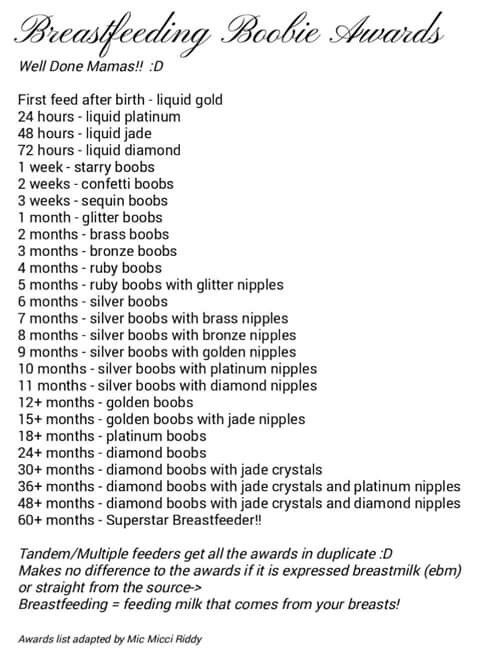
More about the first "magic" hour is described in this chapter: "Birth and the first hours of life."
But that's not all. Immediately after receiving the first drops of colostrum, the baby's body becomes stronger and more adapted to the environment. nine0003
Colostrum starts the work of the gastrointestinal tract, pancreas and liver.
Among other things, this means the timely removal of excess bilirubin - which means that the sooner the first application is made and the more colostrum the baby receives on the first day, the less risk he has of developing the so-called "neonborn jaundice".
Colostrum also plays a protective role in resistance to various diseases, because the baby's immune system is immature at birth. nine0003
For example, immunoglobulin A protects the baby's mucous membranes from bacteria, viruses and parasites.
Alpha-lactalbumin supports the bifidoflora in the baby's intestines, and also forms bioactive lipids that contribute to the destruction of cancer and other foreign cells.
Linoleic and alpha-linoleic acids form the brain and neuroretina of the eye.
All these and many other substances are not artificially reproducible.
It is known that getting even a few drops on the oral mucosa of a premature baby helps to increase the body's defenses and prevent many complications in care. nine0003
Early receipt of colostrum, among other things, contributes to the timely and soft removal of meconium - the original dark-colored stool.
Feeding on Demand
WHO and UNICEF recommend that breastfeeding is best done "on demand" - that is, every time the baby begins to show signs of anxiety and search for the mother's breast.
This approach, unlike feeding according to the regimen, allows the mother and baby to feel more comfortable, relaxed, and receive all the benefits of breast milk in the amount that the child individually requires. nine0003
In the first 24 hours, there may be up to 20 or more such requests. It is believed that the number of feedings that is necessary in the first day of a baby's life should be at least 8.
It is believed that the number of feedings that is necessary in the first day of a baby's life should be at least 8.
Frequent feedings are also necessary because very little colostrum is produced at this stage. But the baby's stomach is still so small that this small volume is just what you need. On the first day of life, the baby's stomach can hold only 6 ml of food!
So frequent feeding from birth is a sure way to give your baby the best protection that colostrum provides. nine0003
Feeding on demand in the first 24 hours of life and beyond is the right and most harmonious start to breastfeeding imaginable.
Frequent breastfeeding also helps to initiate lactation and prepare the breasts for transitional and then mature milk. Then the volume of breast milk will always meet the growing needs of the baby, he will begin to gain weight well, and you, most likely, will not have a reason to worry about a lack of milk in the future. nine0003
There are times when feeding on demand is not possible - for example, the baby is in the intensive care unit or, for one reason or another, is not able to suckle.
Then it is necessary to take measures for the timely development of lactation and providing the child with precious breast milk, organizing pumping with a breast pump. The best way to do this is to use the dedicated INITIATE program on the Symphony* Clinical Breast Pump. In this case, pumping is carried out as often as you would put a baby on - every 2 to 2.5 hours at least. nine0003
Correct breastfeeding
One of the first and most important skills that mother and baby must master is the correct breastfeeding.
Incorrect latch is one of the most common causes of sore and subsequently cracked nipples.
It may take one or two sessions of feeding with an incorrect latch to form painful cracks that cause great concern to the mother and are the "entrance gate" for breast infection. nine0003
Not only that, improper latch-on leads to the fact that the baby is simply not able to get enough milk from the breast, he is malnourished, and weak stimulation does not allow lactation to develop as actively as it should.
Cracks, pain, restlessness and malnutrition of the child, sluggish development of lactation, which soon leads to a lack of milk - these are the negative consequences of improper latch that should be tried to prevent.
Therefore, it is very important from the very first day to pay special attention to the correct latch of the baby, and this is another of the main tasks of the first 24 hours of a child's life. nine0003
A nurse practitioner, a midwife at the maternity hospital or a lactation consultant can help check if the baby is latching correctly and advise on how to correct the situation if necessary.
Often just stretching the nipples before feeding with a breast pump or Nipple Shaper Pads** can help, as an unshaped, flat or even inverted nipple makes latch on difficult.
For particularly difficult cases, Contact** silicone breast pads are available to help your baby ease in and out of the breast. nine0003
Sometimes a lingual frenulum is the cause of a poor grip - then it is important to identify the problem as soon as possible and resolve it quickly. After a small and almost bloodless operation to cut the frenulum, the baby can be immediately applied to the chest.
After a small and almost bloodless operation to cut the frenulum, the baby can be immediately applied to the chest.
Also often the problem of grip is explained by the lack of habit, uncomfortable position - all this is quite easily corrected, postures and positions can be mastered under the guidance of experienced mentors, but it is necessary to correct mistakes as soon as possible, in the first 24 hours. nine0003
So, here are three important conditions for the key 24 hours after childbirth:
- early attachment;
- feeding on demand;
- correct chest grip.
They help start breastfeeding successfully and harmoniously, ensure the favorable development and protection of the baby's body, and start lactation in a timely manner.
If something went wrong, the main thing is not to despair and not give up. Medela comes to the rescue in every situation with modern and fast solutions. nine0003
Literature
Pang WW, Hartmann PE. Initiation of human lactation: secretory differentiation and secretory activation. J Mammary Gland Biol Neoplasia. 2007;12(4):211-221. - Pang, W.W., Hartmann, P.I., "Lactation initiation in the lactating mother: secretory differentiation and secretory activation." G Mammary Gland Biol Neoplasia. 2007;12(4):211-221.
Initiation of human lactation: secretory differentiation and secretory activation. J Mammary Gland Biol Neoplasia. 2007;12(4):211-221. - Pang, W.W., Hartmann, P.I., "Lactation initiation in the lactating mother: secretory differentiation and secretory activation." G Mammary Gland Biol Neoplasia. 2007;12(4):211-221.
Klaus M. Mother and infant: early emotional ties. Pediatrics. nine0201 1998;102( Supplement E 1):1244-1246. — Klaus M., "Mother and Child: The First Emotional Ties". Pediatrix (Pediatrics). 1998; 102 (Appendix E1).
Sobhy SI, Mohame NA. The effect of early initiation of breast feeding on the amount of vaginal blood loss during the fourth stage of labor. J Egypt Public Health Assoc . 2004;79(1-2):1-2.- Sobhi SI, Moham NA, "Early initiation of breastfeeding and its effect on vaginal bleeding in the fourth stage of labour.

